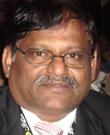The secondary school courses of study and syllabi
By Philip Mudartha
Bellevision Media Network
15 July 2013:
Further to my previous article on education system titled: “The resurrection of Humanities Stream in degree programs” and a series of articles will be published on this subject. In this second article I would like to dwell on various Syllabi and Boards that govern the educations systems and educational institutions.
With increasing recognition that education should help students to develop a well-rounded personality, the bodies and officials administering the education systems have rolled out an overhaul of school syllabi across the nation.
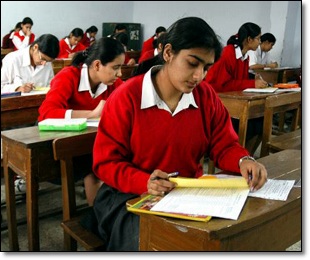
Education in India is largely controlled by its state governments. The state governments have education departments which are supervised by appropriate ministries. As the ministries are headed by a Minister or a number of ministers appointed by the democratically elected government, the education policies are adjusted according to popular needs and aspirations. This scheme of control obviously leads to regional flavor in designing courses of study and prescribing syllabi, especially in the stream of humanities.
A historical perspective of boards of control
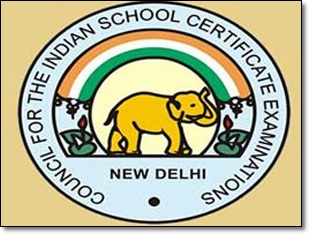 The British government bequeathed us an education system patterned after their own. The Council for the Indian School Certificate Examinations (CISCE), a private registered body, was exercising control in most territories. In addition, there were provincial boards notably in Madras, Kerala and Uttar Pradesh etc. With formation of states on linguistic basis, under a federal constitution, the primary responsibility for basic, secondary and higher secondary education devolved to states. Today, India has 39 boards of education recognized by Government of India. The CISCE is one of them, catering mostly to students who opt to join for their own reasons, mainly because their parents hold jobs requiring frequent and mid-school year transfer of residences within and outside India.
The British government bequeathed us an education system patterned after their own. The Council for the Indian School Certificate Examinations (CISCE), a private registered body, was exercising control in most territories. In addition, there were provincial boards notably in Madras, Kerala and Uttar Pradesh etc. With formation of states on linguistic basis, under a federal constitution, the primary responsibility for basic, secondary and higher secondary education devolved to states. Today, India has 39 boards of education recognized by Government of India. The CISCE is one of them, catering mostly to students who opt to join for their own reasons, mainly because their parents hold jobs requiring frequent and mid-school year transfer of residences within and outside India.
The persuasive government control of education
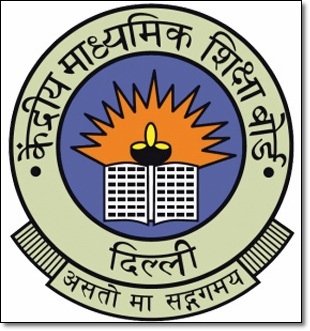 Barring CISCE, the other 38 boards are government controlled. Central Board for secondary Education (CBSE) was constituted by central government to provide its employees an alternative to CISCE. All Kendria Vidyalayas, many private schools, and most schools in the Arabian Gulf countries are affiliated to CBSE. Headquartered in Delhi, CBSE conducts final examinations every March-April for All India Senior School Certificate Examination (AISSCE) for Class 10 and 12.
Barring CISCE, the other 38 boards are government controlled. Central Board for secondary Education (CBSE) was constituted by central government to provide its employees an alternative to CISCE. All Kendria Vidyalayas, many private schools, and most schools in the Arabian Gulf countries are affiliated to CBSE. Headquartered in Delhi, CBSE conducts final examinations every March-April for All India Senior School Certificate Examination (AISSCE) for Class 10 and 12.
In Karnataka, there are two boards overseeing its 10+2 system of state education. This system came into being in the academic year of 1970-71. The Karnataka Secondary Education Examination Board was set up to conduct SSLC examinations beginning with the academic year of 1966-67 as well as to pave way to restructure then existing one year pre-university courses (PUC) into two year PUC under control of The Karnataka Board of the Pre-University Education. This board conducted its maiden PUC examination in March-April 1972.
In Maharashtra, The Maharashtra State Board of Secondary and Higher Secondary Education was re-constituted in 1977. It conducts the SSC and HSC examinations in March-April each year for Class 10 and 12. Thus, Maharashtra also amended its 11-year secondary education system into 10+2 structure.
To whichever board a high school and a senior secondary school are affiliated, the control of government is still strong and all persuasive.
What about other 34 boards in the country?
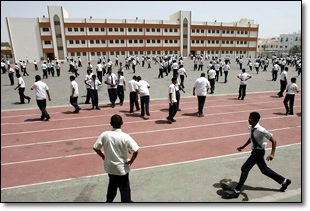 Most parents among Bellevision readers reside in either GCC countries of Middle East, Karnataka and Maharashtra. Their children study in high schools, senior secondary schools and junior colleges affiliated to any one of the five boards of control I have written about. In most Gulf cities, CBSE schools are the only option for parents choosing not to educate them back home but not affording elite and expensive international schools. Parents of lesser means, both parent working odd hours, and those without family status, set up home bases for their children in either Maharashtra or Karnataka, where they attend mostly state board schools.
Most parents among Bellevision readers reside in either GCC countries of Middle East, Karnataka and Maharashtra. Their children study in high schools, senior secondary schools and junior colleges affiliated to any one of the five boards of control I have written about. In most Gulf cities, CBSE schools are the only option for parents choosing not to educate them back home but not affording elite and expensive international schools. Parents of lesser means, both parent working odd hours, and those without family status, set up home bases for their children in either Maharashtra or Karnataka, where they attend mostly state board schools.
For readers residing in other 28 states, they may be sending their children to schools affiliated to any of the other 34 boards. The courses of study and syllabi vary to some extent from region to region, depending on demographics. The main variance is medium of instruction. Especially in north India, Hindi medium schools are a norm. Access to English medium schools is rare and difficult.
Emergence of Education as a business
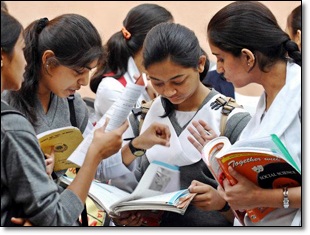 After the restructuring of secondary and senior secondary education into 10+2 pattern, the selection of streams was deferred to degree college level. Consequently, hordes of influential individuals, trusts, businessmen, and community organizations of different religions, social groups and minority groups, entered into business of education. Spates of licenses were issued for setting up both high schools and junior colleges. However, they had to be affiliated mostly to the state boards, in rare cases to either CBSE or CISCE. This is by far a major event in delivering secondary education to remote and backward villages especially in Karnataka and Maharashtra. This event also led to a re-focus of degree level education in existing colleges in bigger towns. They spent their energies and marshaled their resources to expand the range of courses of study beyond the conventional science and arts streams. Further, this event led to incentivizing setting up of new degree colleges in smaller towns. These smaller colleges with limited means offered humanities and commerce streams, to begin with.
After the restructuring of secondary and senior secondary education into 10+2 pattern, the selection of streams was deferred to degree college level. Consequently, hordes of influential individuals, trusts, businessmen, and community organizations of different religions, social groups and minority groups, entered into business of education. Spates of licenses were issued for setting up both high schools and junior colleges. However, they had to be affiliated mostly to the state boards, in rare cases to either CBSE or CISCE. This is by far a major event in delivering secondary education to remote and backward villages especially in Karnataka and Maharashtra. This event also led to a re-focus of degree level education in existing colleges in bigger towns. They spent their energies and marshaled their resources to expand the range of courses of study beyond the conventional science and arts streams. Further, this event led to incentivizing setting up of new degree colleges in smaller towns. These smaller colleges with limited means offered humanities and commerce streams, to begin with.
The private colleges, like private high schools and junior colleges, may or may not receive government aid or grants. In the latter case, where the educational institutions are unaided, they have a choice of medium of instruction. Obviously, more and more such institutions are selecting English as medium of instruction. The public demand for English medium private schools is on the rise, resulting in one of the following situations: a) lowering of quality and standards of learning, b) higher tuition and associated fees, c) lower teacher-student ratio, d) flouting of mandatory norms for facilities and teacher qualifications laid down by regulatory bodies, e) coerced, forced and unaccounted donations extracted from parents for admission to specific streams and courses of study, f) and other fraudulent practices.
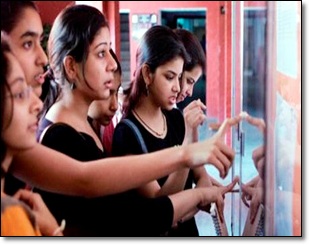 Despite the trend of education emerging as a private business, secondary and senior secondary education still remains largely non-profitable. To sustain, the private institutions have to deliver learning outcomes measured in passing percentages, number of distinctions earned by its students, as well as average percentage of marks obtained by an outgoing class in board examinations. These examinations are mandatorily external assessment based and conducted under and stringent vigilance. High performing schools attract richer students who can afford higher fees and also resourceful patrons and donors aiding with scholarships and student sponsoring schemes.
Despite the trend of education emerging as a private business, secondary and senior secondary education still remains largely non-profitable. To sustain, the private institutions have to deliver learning outcomes measured in passing percentages, number of distinctions earned by its students, as well as average percentage of marks obtained by an outgoing class in board examinations. These examinations are mandatorily external assessment based and conducted under and stringent vigilance. High performing schools attract richer students who can afford higher fees and also resourceful patrons and donors aiding with scholarships and student sponsoring schemes.
In conclusion, the syllabus remains in the hands of education authorities. The courses of study are region specific. This situation requires elaboration, which forms the next episode.
| Comments on this Article | |
| Philip Mudartha, Mumbai | Fri, July-19-2013, 12:46 |
| BV has published report on the announcement by Pejavar Mutt Seer that the century-old Girija Higher Primary School located at Kunjaru will be developed as CBSE residential school and upgraded to Pre-University College. High quality education under CBSE syllabus and supervision is right and timely vision for relatively prosperous regions; such schools will attract richer urban students wanting to escape the hustle bustle of cities to study in quiet environs. Further CBSE is left the decision to students themselves if they will enroll for Board exam at Class 10, making only Class 12 board exams mandatory. In this case, opting to study under CBSE syllabus may make admission to nearby engineering/vocational colleges easier. | |
| Philip Mudartha, Mumbai | Wed, July-17-2013, 12:48 |
| CBSE and CISCE board schools consistently come out with better student performances in cracking various entrance examinations including the elite JEE-IIT. This is in spite of National Council for Educational Research Training (NCERT) controlling syllabus up to 10 2 level, and also publishing and prescribing textbooks across the nation. There are several reasons for their superiority, first being the medium of English from Class-1. Some other reasons will be discussed in future chapters. If parents are in a position to enroll their children in CBSE, CISCE board schools, they should do so. Fear of extinction is best remedy for others unwilling to compete and improve. As they necessity is mother of invention. | |
| Benedict Noronha, Udupi | Tue, July-16-2013, 6:47 |
| A very well thought out article, which in my view is cry before Camel in India. The joke here is that when in 2004 S.M. Krishna Government proposed to introduce English as one of the subjects from First Standard in Karnataka, the present Leadership in the government, many of them to be precise-not toname) opposed it. Now the C.M. has moved it in the Budget Session of 12th July 2013 the same knowing that Kannada Schools are going to be closed for want of students. Had they started English in 1st Standard then , in 2004-05 academic year, even the Government run schools would have done Well. Now the craze has gone to CBSE ICSE cyllebi and the competition lies there. I only wish and pray that better counsel will prevail upon the Educationiists Managements and the Government authority for the good of the Young students. | |




 Write Comment
Write Comment E-Mail To a Friend
E-Mail To a Friend Facebook
Facebook Twitter
Twitter  Print
Print 